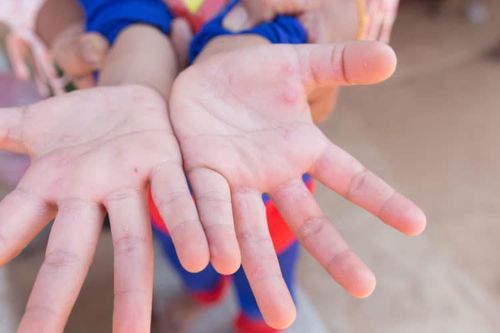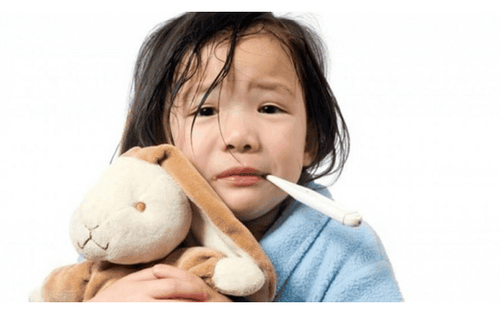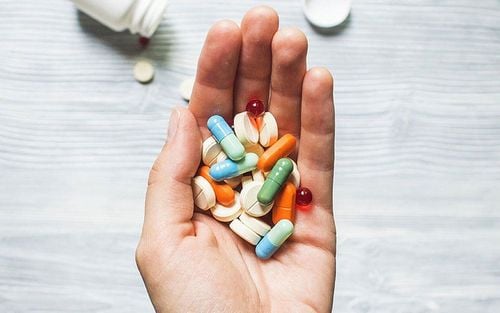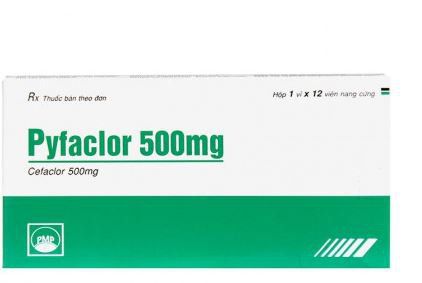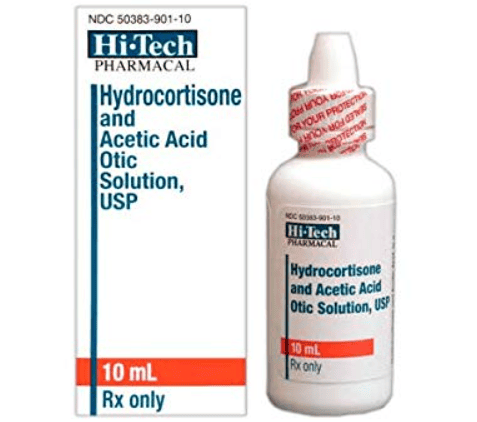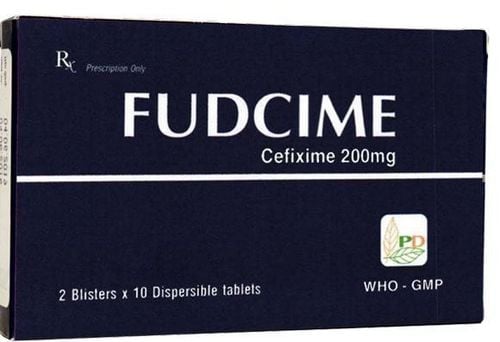This is an automatically translated article.
The article was professionally consulted by Specialist Doctor II Le Thanh Cam - Pediatrician - Pediatrics - Neonatology Department - Vinmec Danang International General Hospital. Dr. Cam has 15 years of experience working in the field of Pediatrics and used to work at the Department of Pediatrics - Danang Hospital and Danang Center for Obstetrics and Gynecology. His strength is in the diagnosis and treatment of pediatric pathologies, resuscitation, pediatric emergency.And resident doctor Duong Van Sy - Department of Pediatrics - Neonatology - Vinmec Hai Phong International General Hospital.
Acute otitis media is a common disease in young children, the most common age is from 6 months to 2 years old. This is a rapidly progressive disease that, if not monitored and treated promptly, can cause some complications that affect children's hearing. This article will provide the signs to recognize and treat acute otitis media.
1. What is acute otitis media?
Acute otitis media is an acute inflammation of the middle ear with a rapid, brief flare-up with signs and symptoms of a middle ear infection, with fluid in the middle ear. The disease is common in children, progresses over 2-3 weeks with typical symptoms of an acute inflammatory process.2. Symptoms of otitis media
Usually occurs with pharyngitis or nasopharyngitis with symptoms such as runny nose, red throat,... Children with fever, can have mild fever, moderate fever or high fever from 39 to 40 degrees Celsius Ear pain, children often Pulling or rubbing the ear The child may cry, refuse to feed, vomit or have diarrhea. In the ear, the eardrum is red, inflamed, and congested. If not treated early, it can cause a ruptured eardrum and pus draining into the ear.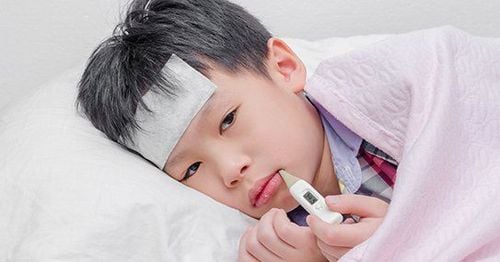
3. How to treat acute otitis media
Do middle ear infections need antibiotics? Research has found that up to 80% of uncomplicated ear infections clear up on their own in about 4 to 7 days without the need for antibiotics. In cases where antibiotics are needed, the course of treatment lasts about 7 days.So how is otitis media treated in detail? Principles of treatment include: treatment of ear pain, anti-infection with antibiotics and follow-up after treatment. Treatment steps are as follows:
3.1 Pain relief, fever reducer Medicines such as paracetamol or ibuprofen can be used to relieve ear pain and reduce fever for children (when the child has a fever above 38.5 degrees Celsius)
Note a warm compress. for children when fever, wear loose, cool clothes; Apply a warm compress to the child's ear area.
3.2 Use of antibiotics Antibiotics are commonly used for children with acute otitis media such as: Amoxicillin, augmentin, azithromycin, cephalosporins generation I, II, III. Avoiding antibiotic resistance will often start with the antibiotic amoxicillin alone, because of the fact that bacteria are still susceptible to this antibiotic and the cost is also lower than with other antibiotics.
The duration of drug use is 7 days, pay attention when taking antibiotics for about 3-4 days, see the symptoms are gone, continue to give the child the full dose of 7 days of the drug, to avoid the case of bacteria resistant to antibiotics. .
Changing antibiotics has a stronger effect in the following cases:
Children have symptoms of fever, fussiness that do not improve after 2-3 days of antibiotic treatment. If the child has previously taken an antibiotic with amoxicillin and it has not been effective, start with another stronger antibiotic If the disease does not completely clear up after a course of amoxicillin Have a history of allergy to amoxicillin Case the child otitis media with purulent ear discharge: Use more antibiotics in combination with hydrocortisone ear drops, clean the ears and do not cover the child's ears to allow the pus to drain.
3.3 Follow-up after treatment Children with acute otitis media should be re-examined within 1-4 weeks after treatment to check if the child has cleared the infection, the fluid in the ear has drained out. If an ear infection occurs again, consider it a new infection or a progression of an old infection to use the right antibiotic.
4. Prevention of acute otitis media
Fully vaccinated, especially HIB, pneumococcal, flu vaccines... Keep warm in the cold season, clean your nose and throat regularly. Do not swim when you have rhinitis, sinusitis. Should treat rhinitis, sinusitis as soon as possible. Should cure V.A. and tonsillectomy in babies with recurrent ear infections. In babies with measles, flu, or typhoid fever, the eardrum should be examined regularly. When otitis media has to be treated aggressively, avoid taking antibiotics with insufficient dosage and interruption.Please dial HOTLINE for more information or register for an appointment HERE. Download MyVinmec app to make appointments faster and to manage your bookings easily.





